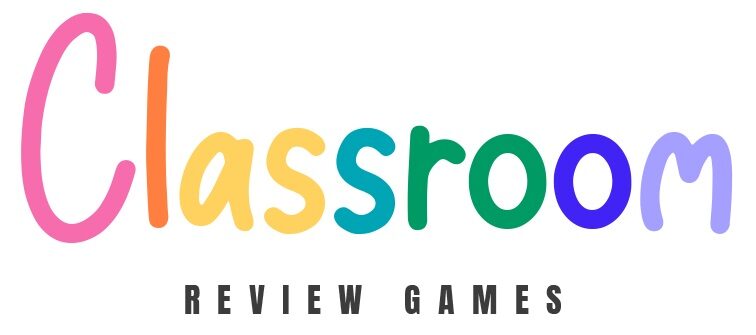Spark Student Excitement with These Classroom-Tested Virtual Games
Transform your virtual classroom into an engaging learning space with game-based activities that actually work. Digital learning doesn’t have to mean endless video lectures or static presentations – interactive games capture students’ attention while reinforcing key concepts across any subject area. From quick Kahoot! quizzes that spark friendly competition to immersive Minecraft Education challenges that teach complex STEM concepts, virtual classroom games create memorable learning experiences that students genuinely look forward to. Whether you’re teaching remotely or in a hybrid setting, incorporating strategic game elements into your lessons boosts participation, encourages peer collaboration, and makes abstract concepts concrete through hands-on digital exploration. The best part? You don’t need advanced tech skills to get started – this guide will walk you through proven game-based activities that you can implement immediately, complete with setup tips and classroom management strategies to ensure smooth execution.
Why Virtual Classroom Games Are Game-Changers

Beyond Traditional Learning Methods
Virtual classroom games revolutionize the traditional teacher-lecture model by putting students in the driver’s seat of their learning journey. Instead of passively receiving information, students become active participants, making choices and solving problems in real-time. These digital tools transform mundane exercises into exciting challenges, where every click and decision contributes to the learning process.
What makes these games particularly effective is their ability to provide instant feedback. Students don’t have to wait for test results to know if they’ve mastered a concept – they see the impact of their choices immediately. The competitive elements naturally boost engagement, while collaborative features encourage teamwork and peer learning.
These interactive experiences also cater to different learning styles simultaneously. Visual learners enjoy the graphics, auditory learners benefit from sound effects and narration, and kinesthetic learners engage through active participation. Best of all, students often don’t even realize they’re learning because they’re having too much fun!
Building Digital Literacy Through Play
Digital games offer a unique opportunity to develop students’ tech skills while they master core subjects. When students navigate educational games, they naturally learn essential digital skills like mouse control, keyboard shortcuts, and basic troubleshooting. They become comfortable with user interfaces, learn to follow digital instructions, and develop problem-solving strategies for technical issues.
Interactive games also help students understand digital citizenship and online safety through practical experience. As they participate in virtual activities, they learn about appropriate online behavior, digital communication etiquette, and responsible technology use.
Best of all, students develop these crucial digital literacy skills without even realizing they’re learning them. The engaging nature of educational games makes the process feel natural and fun. By incorporating regular gaming sessions into your lessons, you’re preparing students for an increasingly digital world while keeping them focused on their primary learning objectives.

Most Effective Virtual Games for Your Classroom
Interactive Quiz Shows
Transform your virtual classroom into an exciting game show with interactive quiz show platforms that get everyone involved! These engaging tools let you create buzzer-style competitions, multiple-choice challenges, and rapid-fire review sessions that students absolutely love.
Start by choosing a game show format that fits your lesson – think “Jeopardy!”-style categories for subject review or “Who Wants to Be a Millionaire?” for progressive difficulty questions. Many platforms allow you to customize themes, add sound effects, and even include your own images to make the experience more immersive.
To maximize participation, try splitting your class into teams and assigning team captains. Create a points system that rewards both speed and accuracy, and don’t forget to include “lifelines” or bonus rounds to keep the excitement high. You can even let students take turns being the host!
Pro tip: Keep questions short and clear, mix up difficulty levels, and always have a few backup questions ready. Remember to celebrate both winning teams and great effort – it’s all about making learning fun while reinforcing key concepts.
Virtual Board Game Adaptations
Traditional board games have found new life in the digital classroom, offering familiar fun with added educational benefits. Popular adaptations include digital versions of Monopoly using curriculum concepts, virtual Scrabble for vocabulary building, and customized Trivial Pursuit for subject review. These virtual versions often come with built-in timers, automatic scoring, and the ability to save progress – features that streamline classroom management.
Teachers can easily modify these games to match their lesson objectives. For example, transform Snakes and Ladders into a math review game where students solve equations to move forward, or adapt Pictionary into a virtual whiteboard activity for vocabulary practice. Many platforms offer templates for creating board game-style review sessions, complete with customizable squares, cards, and quiz elements.
The best part? Multiple students can play simultaneously from their devices, making these games perfect for both in-person and remote learning environments. Plus, digital adaptations eliminate common classroom issues like lost pieces or time spent on setup.
Team-Based Challenge Games
Get your students excited about learning with engaging team-based review games that foster collaboration and friendly competition! Break your class into small groups for virtual scavenger hunts, where teams race to find answers using online resources. Try Kahoot! Team Mode, which lets students work together to answer questions while building consensus. Another crowd favorite is Mystery Solve, where teams piece together clues in breakout rooms to crack a subject-related puzzle.
Digital escape rooms are perfect for building problem-solving skills – teams work together to “break out” by completing curriculum-based challenges. For a quick energy boost, try Virtual Quiz Relay, where team members take turns answering questions to help their group reach the finish line first.
Remember to mix up team compositions regularly to help students develop relationships with different classmates and strengthen class unity. Keep teams small (3-4 students) to ensure everyone participates actively!

Setting Up Your First Virtual Game Session
Technical Setup Made Simple
Getting your virtual classroom games up and running is easier than you might think! Start with the basics: a stable internet connection and a device with a webcam (computer, laptop, or tablet). Most virtual classroom platforms like Zoom, Google Meet, or Microsoft Teams work perfectly for hosting games.
Make sure all your students have access to the platform you choose and know how to join your virtual room. Before game time, test your audio and video settings, and encourage students to do the same. If you’re planning to share your screen (which is great for many games), practice this feature beforehand.
For the best experience, create a quiet space with good lighting facing you. Consider using headphones to reduce echo and background noise. Have your game materials ready in separate browser tabs or documents for smooth transitions.
Pro tip: Keep a simple troubleshooting guide handy for common issues like audio problems or connection drops. Remember, you don’t need fancy equipment – most virtual games work great with basic setups!
Creating Clear Game Rules
Clear rules are the foundation of successful virtual classroom games. Start by keeping your rules simple and easy to understand – aim for 3-5 main guidelines that students can quickly grasp. Write them down in student-friendly language and share them on screen at the beginning of each game session.
Make sure to explain how students should participate (raising virtual hands, using chat features, or unmuting), what constitutes appropriate behavior, and how points or rewards will be earned. Consider creating visual aids like colorful slides or infographics to reinforce the rules, especially for younger students.
Test your rules with a practice round before diving into the actual game. This helps identify any confusion and allows students to get comfortable with the format. Be consistent with rule enforcement, but maintain flexibility for technical issues that may arise during virtual play.
Remember to address specific virtual classroom behaviors like proper microphone use, chat etiquette, and screen sharing protocols. When students understand exactly what’s expected, they can focus on enjoying the game and learning the material.
Tips for Maximum Student Engagement
Keeping the Energy High
Even the most exciting virtual games need a dash of energy to keep students engaged throughout the session. Mix things up by incorporating countdown timers for quick-thinking rounds and using upbeat background music during gameplay. Consider adding surprise bonus points for enthusiastic participation or creative answers. Break longer games into shorter segments with mini-challenges or “power rounds” to maintain momentum. Use encouraging phrases and virtual celebrations (like digital confetti or fun sound effects) to celebrate victories and progress. Don’t forget to be animated in your delivery – your energy is contagious! Encourage friendly competition through team challenges, and keep a running leaderboard that updates in real-time. Remember to read your classroom’s energy levels and adjust the pace accordingly, ensuring everyone stays motivated and involved.
Managing Different Skill Levels
One of the biggest challenges in virtual classroom games is accommodating students with different skill levels. Create tiered challenges within the same game by offering basic, intermediate, and advanced options. For example, in a vocabulary game, some students might match simple words while others work with more complex terms.
Use breakout rooms to group students of similar abilities, allowing them to work at their own pace without feeling overwhelmed or held back. Enable peer support by pairing stronger students with those who need extra help – this benefits both groups as teaching others reinforces learning.
Consider offering flexible time limits and multiple attempts at challenges. Some students might complete a puzzle in two minutes, while others need five. The key is maintaining engagement without creating frustration. Remember to celebrate progress at all levels, focusing on individual improvement rather than competition between students.
Provide optional hints or scaffolding tools that students can use when needed, allowing them to choose their level of support independently.
Virtual classroom games have revolutionized the way we engage students in online learning environments. By incorporating these interactive activities into your lessons, you can create a dynamic, fun, and effective learning experience that students will look forward to. Remember that the key to success lies in choosing games that align with your learning objectives while maintaining an element of entertainment and healthy competition.
Don’t be afraid to experiment with different games and adapt them to suit your classroom’s unique needs. Start small with one or two games, gather feedback from your students, and gradually expand your virtual gaming toolkit. The flexibility of these digital tools means you can easily modify difficulty levels, adjust time limits, and customize content to match your curriculum requirements.
Most importantly, keep in mind that virtual classroom games are more than just fun activities – they’re powerful tools for building community, reinforcing learning concepts, and developing digital literacy skills. By making these games a regular part of your teaching strategy, you’ll create memorable learning experiences that resonate with today’s digital-native students.
So go ahead, dive in, and start transforming your virtual classroom into an engaging, game-based learning environment. Your students will thank you for it!


